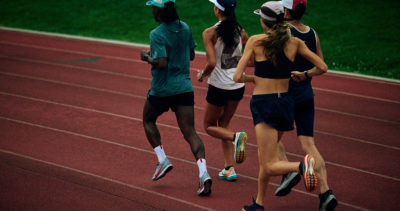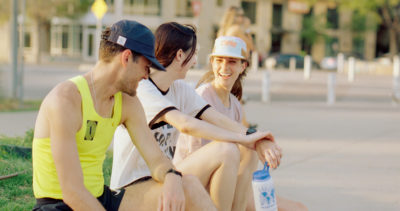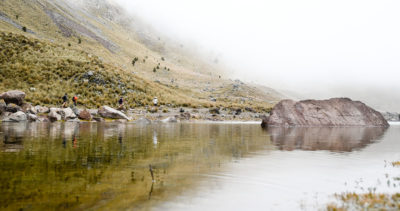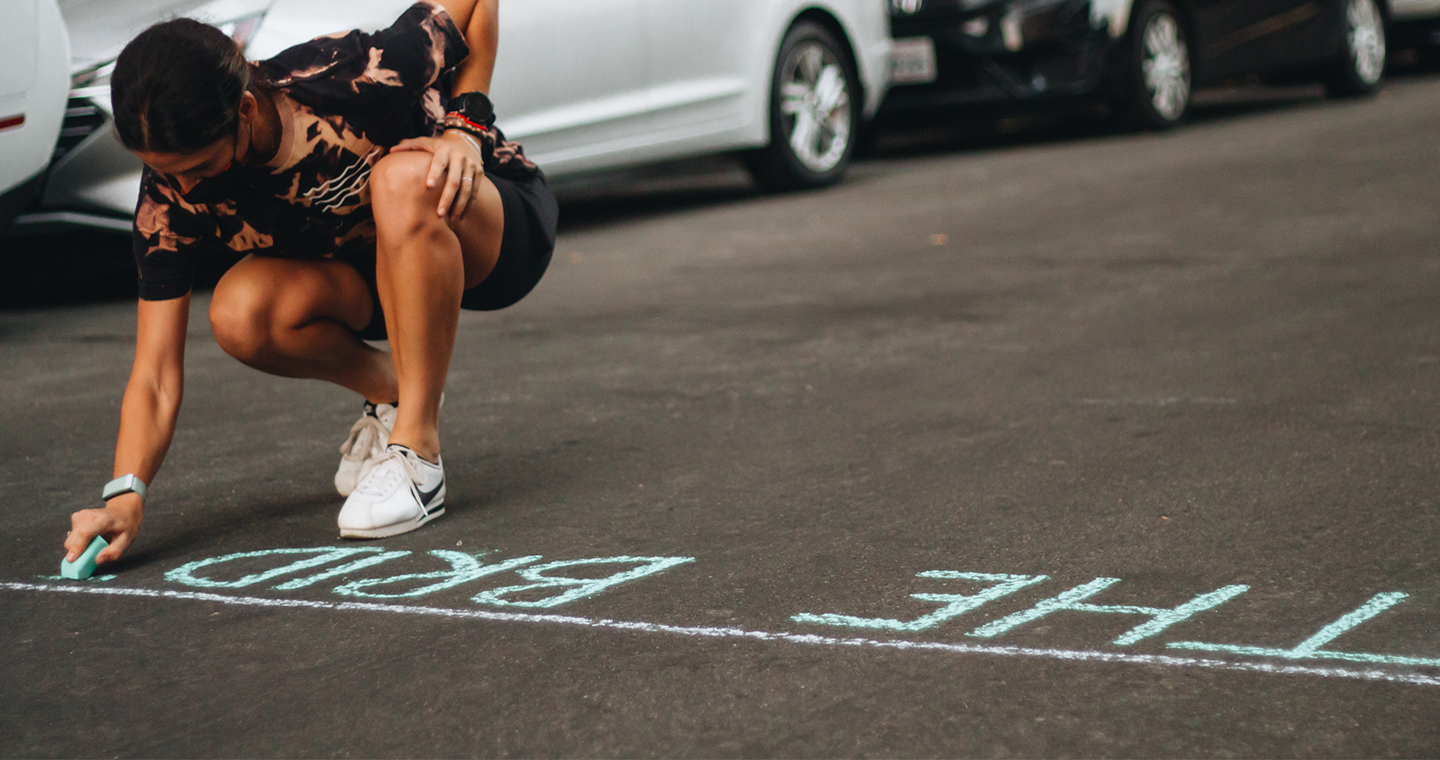
tip the balance
tip the balance
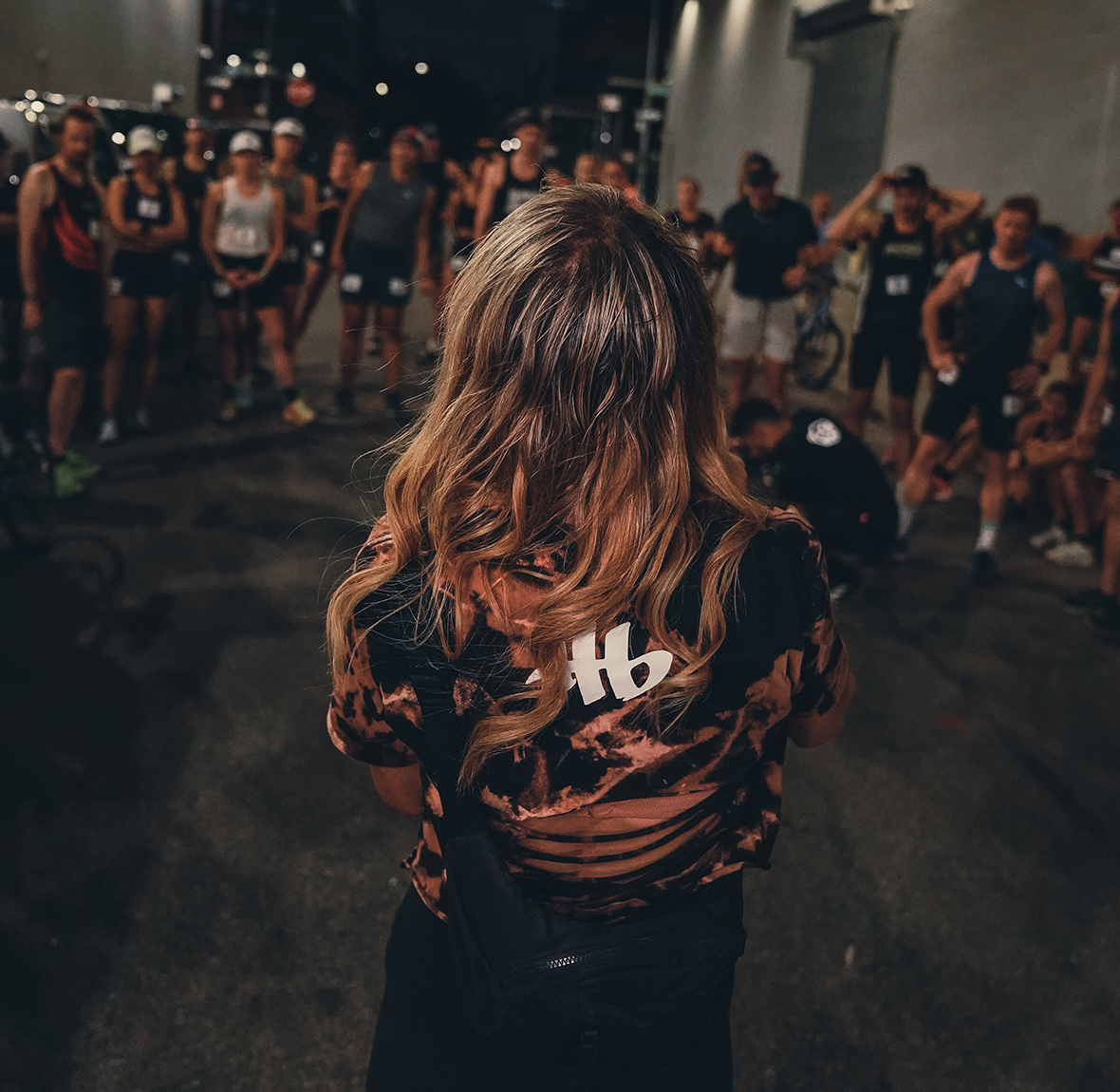
words x
like the wind
photos x
dave hashim, hans meckler, matt bradford, annie cun, matthew harrison, ian tuttle, james gagne
Runners are familiar with the idea of jostling for position at the start of a race. Even if we are not at the front, we’ve watched athletes vying to be one of the first away as the starter’s pistol fires. But what about jostling for position in the sport of running, not just at an individual event?
According to Darcy Budworth, founder of the Take The Bridge unsanctioned race series, that is what women have been forced to do for as long as the sport of running has existed.
Darcy is on a mission to change this imbalance. And she has a very simple and effective way to address it.
“I’m a female leader,” Darcy explains. “And I see women getting drowned out by their male counterparts in running all the time. Many women feel edged out of the running community.”
According to Darcy Budworth, founder of the Take The Bridge unsanctioned race series, that is what women have been forced to do for as long as the sport of running has existed.
Darcy is on a mission to change this imbalance. And she has a very simple and effective way to address it.
“I’m a female leader,” Darcy explains. “And I see women getting drowned out by their male counterparts in running all the time. Many women feel edged out of the running community.”
“so I’m working to make take the bridge a way that women can take up space.”
From its inception, Take The Bridge has been about much more than fun competitions in exciting locations, with a unique twist (spoiler alert: it has to do with bridges). Darcy’s stated aim is that 75% of the co-directors – the name given to the people who organise Take The Bridge events in cities around the world – will be female. The races are also organised in a way that means the women race after the men, making them the stars of the show.
When Take The Bridge started in 2015, Darcy would travel to each city where a race was planned. She would pick the route, organise the entries, start the races and manage the finish line. Because of this Darcy was able to deliver an event of the same quality every time. But as the race series grew and then the Covid-19 pandemic hit, Darcy realised she would need to involve more people. Which is where the idea for co-directors came in. “The next step in the evolution of Take The Bridge was leaning on other people,” Darcy explains. “So when runners would ask if we could come and host a race in their city, I’d find, mentor and coach a co-director to deliver the event. That means we can do more races in more locations and has the added benefit that runners get really excited when they know the race has been organised by a local.”
When Take The Bridge started in 2015, Darcy would travel to each city where a race was planned. She would pick the route, organise the entries, start the races and manage the finish line. Because of this Darcy was able to deliver an event of the same quality every time. But as the race series grew and then the Covid-19 pandemic hit, Darcy realised she would need to involve more people. Which is where the idea for co-directors came in. “The next step in the evolution of Take The Bridge was leaning on other people,” Darcy explains. “So when runners would ask if we could come and host a race in their city, I’d find, mentor and coach a co-director to deliver the event. That means we can do more races in more locations and has the added benefit that runners get really excited when they know the race has been organised by a local.”
Jordie Whittle is the co-director behind Take The Bridge races in Austin, Texas. She loves the unconventional nature of the event. “I’ve never seen anything like it in the running world,” she says. “Cycling has alley cat races that are very similar, but to see the activation of the running community to bring out all of the local hotshot racers is the epitome of orchestrated chaos.”
Amy Woolridge Sunde from Denver, Colorado, says something similar, recalling that her favourite running event was “the Red Hook Crit 5km. I have never had a more exhilarating race, running loops with people way faster than me and trying to hang on. It was my fastest 5km to date. With Take The Bridge I think it’s the playful nature of the race that makes them special. No set distance, shortcuts, just racing for the fun of it.”
Amy Woolridge Sunde from Denver, Colorado, says something similar, recalling that her favourite running event was “the Red Hook Crit 5km. I have never had a more exhilarating race, running loops with people way faster than me and trying to hang on. It was my fastest 5km to date. With Take The Bridge I think it’s the playful nature of the race that makes them special. No set distance, shortcuts, just racing for the fun of it.”
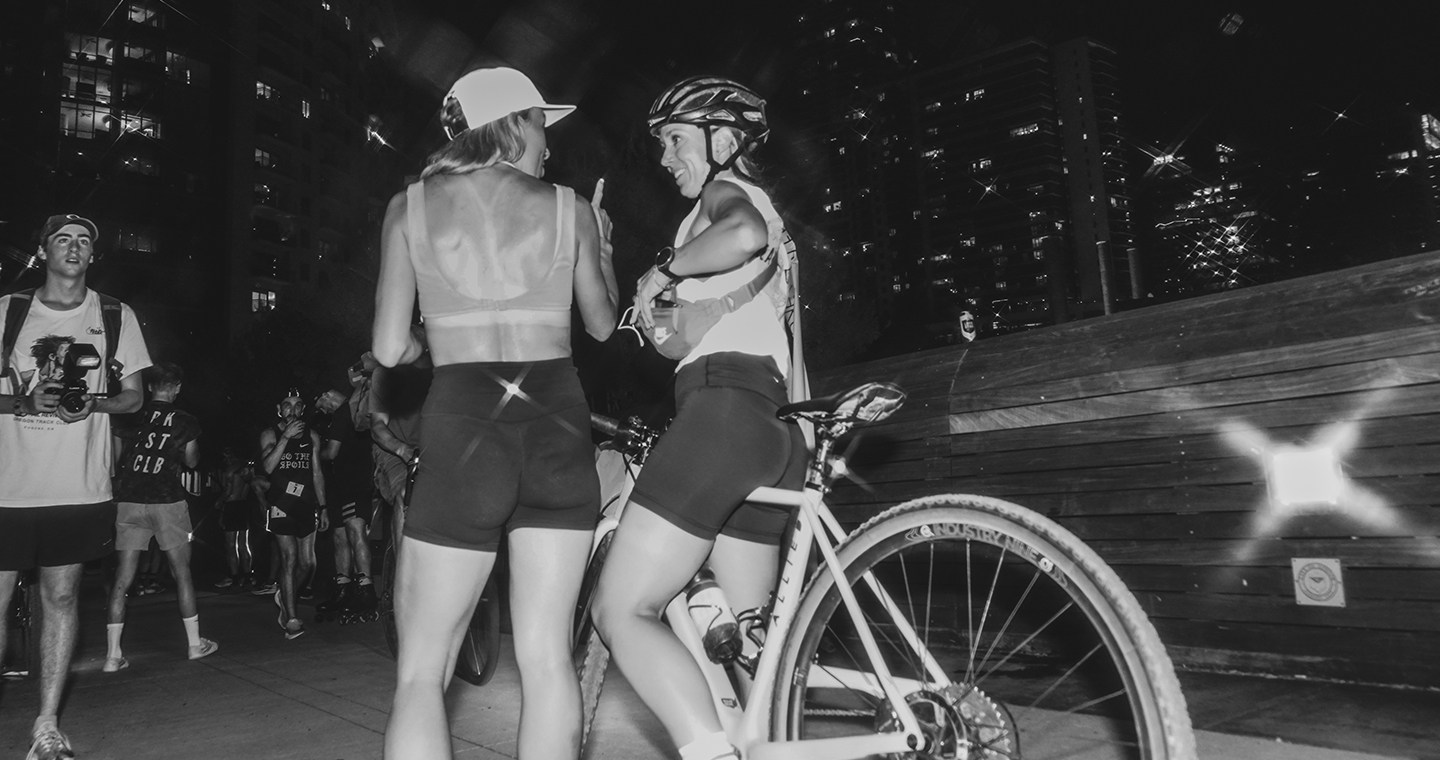
Emphasising female participation through racing other women is a big part of why Jenna Crawford, who co-directs the Take The Bridge races in Los Angeles, California, is excited to be involved: “I ran my first Take The Bridge in Boston in 2019. I knew I was lining up against so many fast women in a city where I was completely unfamiliar with its layout. It was exciting and intimidating all at the same time. I always appreciate how Darcy leans into the local runners and crews to give the city ownership of their Take The Bridge races.”
Iman Wilkerson, co-director of Take The Bridge in San Diego, underlines why it is important that many of the co-directors are women:
Iman Wilkerson, co-director of Take The Bridge in San Diego, underlines why it is important that many of the co-directors are women:
“I love that darcy has included other women in this space that is traditionally directed and run by men.”
“I am honoured to be included in this collective of women co-directors from around the country who put on some really rad races. I not only took this on as a challenge to put on a race for the runners, but to reflect the style and grit that has attracted so many runners to the race… that happens to be put on by a woman.”
Jennifer Sunahara, co-director of a Take The Bridge event on the outskirts of Los Angeles, organised a race that took place in the Santa Monica Mountains, starting from Mulholland Drive and heading into the San Vincente Mountain Park. She knows first-hand the value of racing with and against other women. “I had planned a route around the course with my ladies and we were just going to run as a pack. That was until we got separated by traffic and lights. We all finished, cheered for each other, popped bottles of champagne. I mean we were living it up in the streets of downtown LA,” Jennifer says.
Perhaps one of the most iconic Take The Bridge events was co-directed by Jenni Dubman and involved racing across the Golden Gate Bridge. For Jenni, the key to what makes the races special is the people: “I want to continue to bring the running community together at these races. One thing I love about the races it that folks from all kinds of run crews show up to run. I’ve met so many cool runners through these races and I hope we continue to integrate and build the Bay Area community as a whole.”
Perhaps one of the most iconic Take The Bridge events was co-directed by Jenni Dubman and involved racing across the Golden Gate Bridge. For Jenni, the key to what makes the races special is the people: “I want to continue to bring the running community together at these races. One thing I love about the races it that folks from all kinds of run crews show up to run. I’ve met so many cool runners through these races and I hope we continue to integrate and build the Bay Area community as a whole.”
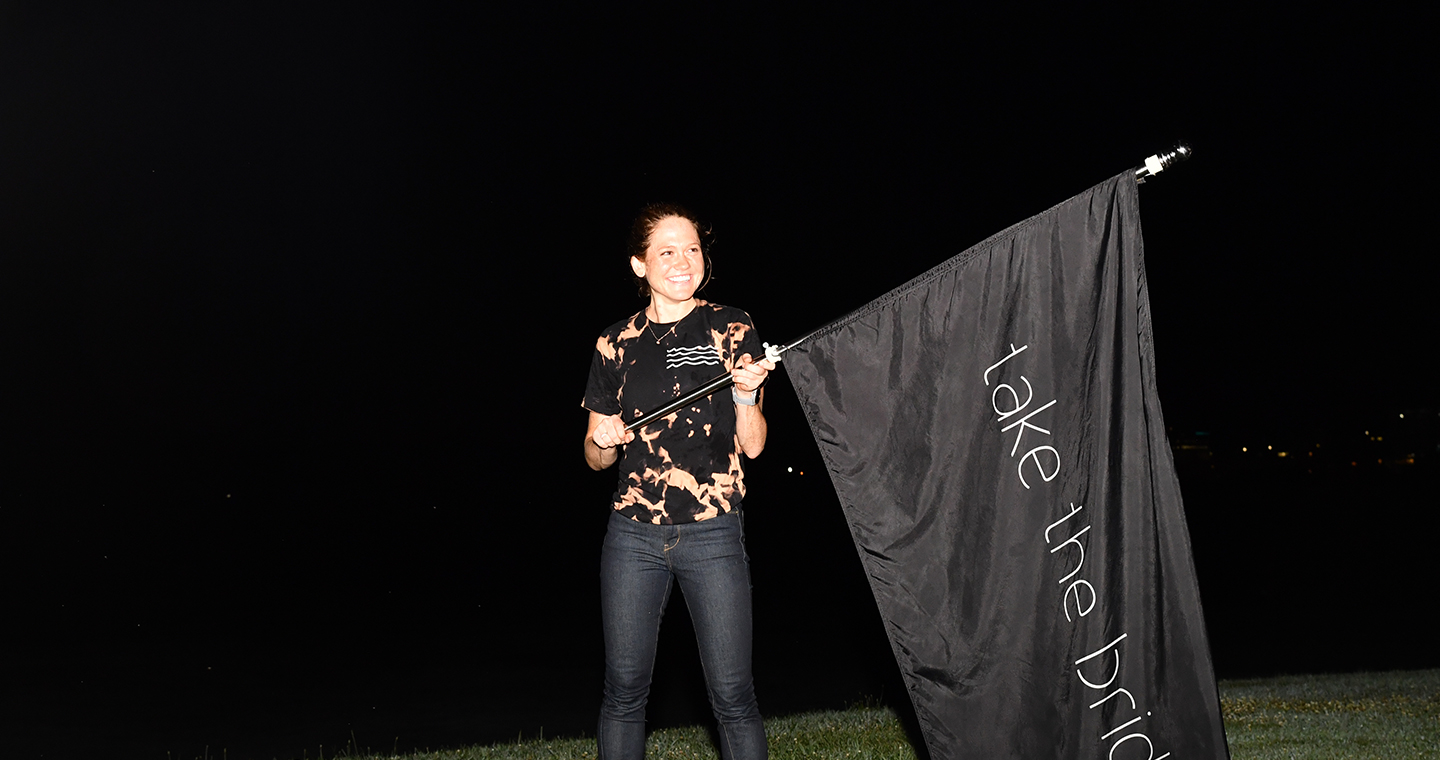
Blakely Garrity, who is the co-director in Raleigh, North Carolina, agrees with Jenni – community is at the heart of the events. “For our Raleigh races, we had people join that have been instrumental in the run community whether in the past or currently,” she says. “We had post-collegiate athletes, moms who got away after putting their kids to bed, transgender participants, everyday runners, new runners.”
While it is clear that every Take The Bridge race is unique, they share common foundations. Not least the fact that, as Darcy says: “My aim is to facilitate women being leaders in their communities. Since launching the Take The Bridge race series I have had so many barriers put in my way that I have had to overcome. Now I’m in a position to support female co-directors as they come together to create races that allow runners to feel challenged and welcomed at the same time.” There might be jostling at the start of the races Darcy and her co-directors organise. But that will be in the service of ensuring women aren’t pushed to the side in running any more.
First published in Like the Wind magazine issue #31.
While it is clear that every Take The Bridge race is unique, they share common foundations. Not least the fact that, as Darcy says: “My aim is to facilitate women being leaders in their communities. Since launching the Take The Bridge race series I have had so many barriers put in my way that I have had to overcome. Now I’m in a position to support female co-directors as they come together to create races that allow runners to feel challenged and welcomed at the same time.” There might be jostling at the start of the races Darcy and her co-directors organise. But that will be in the service of ensuring women aren’t pushed to the side in running any more.
First published in Like the Wind magazine issue #31.
more articles


